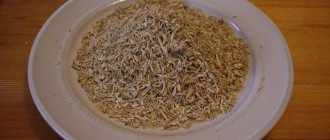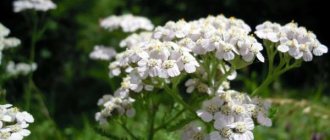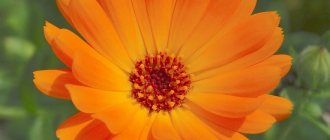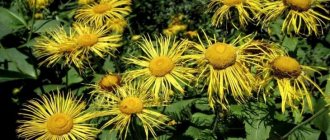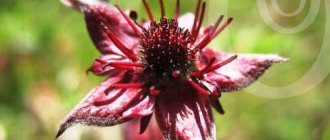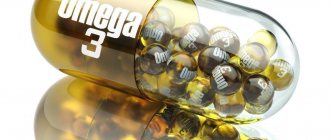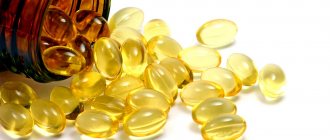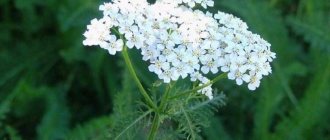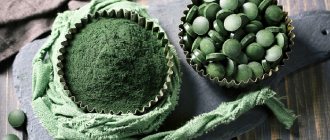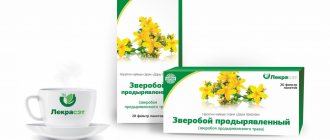Manchurian Aralia (name in Latin: Aralia mandshúrica) has other names: high aralia, devil's tree, and thorn tree. Plant species and family: Aralia is a fast-growing shrub or small deciduous tree
Manchurian Aralia (name in Latin: Aralia mandshúrica) has other names: high aralia, devil's tree, and thorn tree.
Plant species and family: Aralia is a fast-growing shrub or small deciduous tree. The plant is a species of the genus Aralia, family Araliaceae. The name of the genus in Latin is Aralia, and the family name is Araliaceae.
Pharmacodynamics and pharmacokinetics
Tincture of Aralia Manchurian (Aralia high), erroneously called Aralia Manchurian, is a medicinal preparation of plant origin that takes an active part in stimulating the central nervous system (superior in its effect to tincture of ginseng ) and exhibits hypertensive, tonic and hypoglycemic effectiveness.
Improves sleep , appetite , reduces fatigue, has a beneficial effect on the nervous system , and also enhances redox and adrenal glucocorticosteroid function. Increases leukocyte phagocytic activity and overall resistance of the human body.
Botanical characteristics
Root (rhizome): the location of the root system in Aralia is radial. They are located horizontally from the surface of the earth at a depth of 10-25 cm. Then, at a distance of 2-3 (sometimes 5) meters from the trunk, the roots of the plant bend sharply vertically down to a depth of 50-60 centimeters. They branch profusely and form many branches.
Trunk (stem): The trunk of the plant is straight, with a diameter of about 20 centimeters. The trunk of the plant and its branches are lined with a large number of large thorns.
Leaves: large, their length is up to 1 m or even more. The leaves are double-pinnate, compound, they consist of 2-4 lobes of the first order, and these in turn consist of 5-9 pairs of leaflets.
Flowers and inflorescences: small, cream or white, bisexual, collected in umbrellas forming large multi-flowered branched inflorescences at the top of the trunk. The inflorescence consists of 50-70 thousand flowers. Inflorescence diameter up to 45 cm.
Fruits: fruiting is annual and sustainable. The fruits are blue-black, kernel-shaped, inside they have 5 seeds, the diameter of which is up to 5 mm. An adult aralia can produce up to 60 thousand fruits. The weight of one thousand fruits will be about 50 grams.
Height: the height of the plant reaches 6, sometimes 12 meters.
Flowering time: Manchurian Aralia blooms in July-August. Under natural conditions, it begins to bloom in the fifth year of life. Flowers begin to bloom from the edges.
Ripening time: second half of September-October.
Life expectancy: Manchurian Aralia actively develops up to 22-24 years, then the growth processes begin to fade.
Reproduction: Manchurian aralia has a well-expressed ability to reproduce vegetatively. But they will also reproduce by seeds. Up to 250 adventitious buds can be formed on 1 meter of roots, from which shoots are formed. After frosting or cutting down the Manchurian aralia, it begins to produce dense growth.
Distribution: high aralia is common in Korea, Japan and China, the Far East, the Kuril Islands, Sakhalin, and the Primorsky Territory.
High aralia grows singly or in small groups in coniferous undergrowth, as well as mixed forests. The plant prefers bright places, edges and clearings.
What part of the plant is used: the medicinal raw materials of Aralia Manchuria are roots, leaves and bark. The fruits of Aralia Manchuria are not used.
Chemical composition of the plant: The roots of Manchurian aralia contain alkaloids, carbohydrates, triterpene saponins, essential oil, flavonoids, organic acids, and resinous substances.
Collection and procurement of raw materials
If the roots are harvested in the fall, then they begin to do this in September, and if in the spring, then before the leaves bloom. You need to start digging from the trunk and gradually move to the periphery of the root. Roots with a thickness of 1-3 cm are suitable for raw materials. If the diameter is less than 1 cm or more than 3 cm, then such roots are not dug up. When harvesting, you cannot dig up the entire root system of a plant. You need to leave at least half of the roots that extend radially from the trunk. It has many adventitious buds, which, after harvesting, will ensure the restoration of Manchurian Aralia thickets.
In place of the dug plant, it is recommended to plant a root cutting of the plant, about 10 cm in length and 1-3 cm in diameter. It is recommended to use plants 5-15 years old for harvesting.
The dug roots are cleaned from the ground, during this the roots are removed that have a rotten or blackened central part, and roots whose diameter is more than 3 cm. The roots are dried in dryers, do not raise the temperature above 50 ° C, or indoors, but then they should be well ventilated. If the weather is dry, you can do this outdoors. Manchurian Aralia raw materials are suitable for 2 years. The raw material has an aromatic odor and a bitter, slightly astringent taste.
Aralia bark is harvested at the same time as the roots. Leaves are collected during flowering or after, in sunny, dry weather. Leaves and bark are dried at a temperature of 50 - maximum 55 ° C.
Traditional medicine also uses other types of aralia - Schmidt's, continental.
Pharmacological properties (Action)
Herbal preparations based on Manchurian Aralia have a stimulating effect on the central nervous system. In terms of activity, they surpass the effect of Eleutherococcus and ginseng preparations. Aralia root extract has a gonadotropic effect. Aralia preparations do not have a significant effect on blood pressure; they slightly stimulate breathing and have some cardiotonic effect. Aralia Manchurian preparations are also characterized by anti-stress effects.
Indications for use of Aralia Manchurian
- asthenic syndrome;
- arterial hypotension;
- decreased libido ;
- neurasthenia;
- mental exhaustion;
- depression;
- acute viral respiratory infection (in complex treatment);
- consequences of traumatic brain injuries , meningitis , concussion ;
- enuresis;
- radiation sickness;
- post-influenza arachnoiditis ;
- mental and physical fatigue .
Contraindications
- increased excitability ;
- age up to 12 years;
- hypersensitivity;
- insomnia;
- epilepsy;
- arterial hypertension ;
- hyperkinesis.
Carefully:
- currently diagnosed traumatic brain injuries ;
- liver diseases;
- brain pathologies ;
- alcoholism.
Interaction
Potentiation of the effects of analeptics and stimulants ( Caffeine , Phenamine , Camphor , etc.) was observed.
The drug is an antagonist of drugs that exhibit a hypnotic effect and/or depress the central nervous system (including tranquilizers , barbiturates , anticonvulsants , etc.).
Pests of culture
Having good immunity, aralia practically does not get sick, but pests sometimes damage young seedlings. To prevent the appearance of insect pests such as wireworms, chafer larvae, mole crickets, and slugs, soil care is used. It needs to be regularly loosened, weeds removed, ash used to destroy larvae, and green manure sowed to improve the structure and composition.
Removing insects manually several times, mulching with eggshells, crushed dry branches, pine needles helps to destroy slugs, and “dung traps” help in the fight against mole crickets.
When insects appear, you can use the drugs Bazudin, Aktara and others.
special instructions
The use of Aralia Manchuria in the evening hours is not recommended, due to possible sleep disturbance .
There is seasonality in the effectiveness of the drug (the most effective use is in winter and autumn).
During therapy, special attention must be paid to driving and precise or dangerous work.
Planting Aralia Manchurian and caring for it.
Despite its low cost, Aralia tincture is not so easy to find in pharmacies and therefore some people grow this plant and subsequently make the tincture on their own.
Photo of Aralia Manchurian
Aralia Manchurian is a tree-like perennial plant with large leaves and thorns along the trunk. It blooms in summer, bears fruit in autumn, and is propagated by cuttings, seeds or shoots. Feels great in the middle zone and is quite frost-resistant for more northern regions.
The plant is light-loving and prefers well-drained and fertile (use of fertilizers) soil, and is afraid of parasites. The root system of the plant, which is very fragile and therefore requires special attention and careful treatment, has the greatest healing properties.
In addition to its medical purpose, the plant is also used for decorative purposes, for example, to form a “hedge” or simply as a decoration for a garden plot.
Chemical composition
For medicinal purposes, roots, bark and fresh leaves should be used. The composition contains useful components:
- Carbohydrates;
- Alkaloids;
- Organic acids;
- Essential oils;
- Flavonoids.
The roots contain vitamins and minerals. If you properly grow and prepare means of treatment and restoration, you can quickly improve your body. The roots contain oils, starch, saponins, numerous trace elements, and alkaloids.
Analogs
Level 4 ATX code matches:
Saparal
Abisib
Herbion ginseng
Citrulline
Codecor
Aloe syrup with iron
Aloe extract liquid for injection
Evalar Elixir
Rhodiola extract liquid
Doppelhertz Beauty Cellunorm
Doppelgerz Vitalotonic
Doppelhertz Nervotonic
Doppelgerz Ginseng Active
Doppelhertz Active Antistress
Befungin
Ladasten
Gerimax Premium
- Adaptovit;
- Aloe syrup;
- Apilak;
- Safinor;
- Befungin;
- Ginseng tincture;
- Schisandra tincture;
- milife;
- Pantocrine;
- Eleutherococcus extract;
- Radiola extract;
- Bittner's elixir , etc.
Reviews for Aralia tincture
Reviews about the Manchurian Aralia tincture, provided it is used correctly and in a timely manner, are positive. The drug perfectly helps with asthenic phenomena , atherosclerosis in the initial period, post-traumatic lesions of the central nervous system , depression , neurasthenia and other similar conditions. In addition, the tincture increases appetite , improves well-being, performance , stimulates cardiovascular activity central nervous system function , and helps increase muscle strength, lung capacity, and overall body resistance.
Aralia Manchurian is used in bodybuilding as a stimulant of physical activity and appetite. Athletes themselves position Aralia tincture as an anabolic that allows them to achieve a more complete physical condition of the body and increase body weight . The recommended dose of tincture for bodybuilding is 5-15 drops per day.
Active ingredients
The medicinal characteristics of aralia are based on the diverse chemical composition of the plant. Here are the main operating components of culture:
- Starch - quickly reduces cholesterol. Normalizes blood pressure.
- Essential oils – provide antiseptic, anti-inflammatory effects. The plant calms and relieves spasms.
- Phytosterols – promote the production of vitamin D. Steroid hormones and necessary bile acids appear.
- Flavonoids – relieve spasms. The capillaries are strengthened and the heart muscle is nourished. Blood pressure is normalized, it has a diuretic effect, and the blood stops.
- Resins - guarantee antibacterial, mild laxative and wound healing effects.
- Vitamin C is a powerful antioxidant that improves immunity.
- Tanning components – provide an astringent effect, remove inflammation.
Contains vitamins and microelements. The products give an excellent effect.
